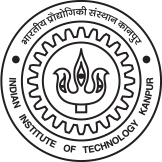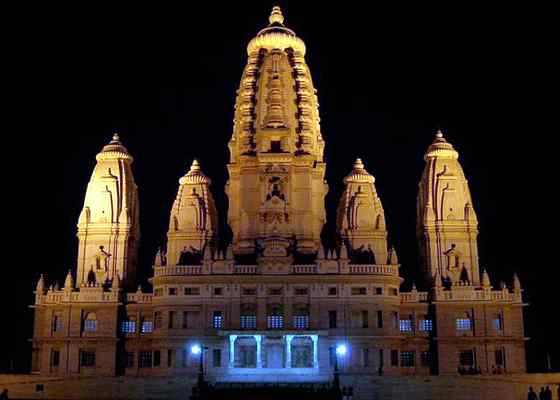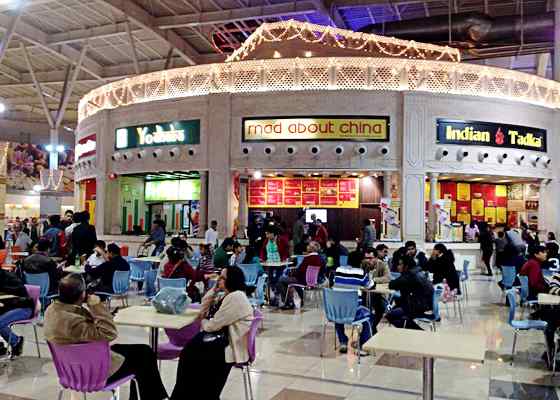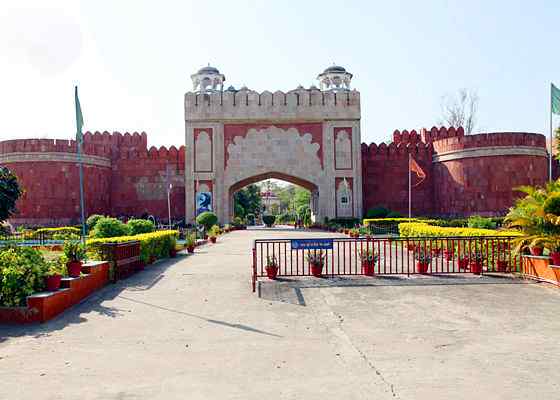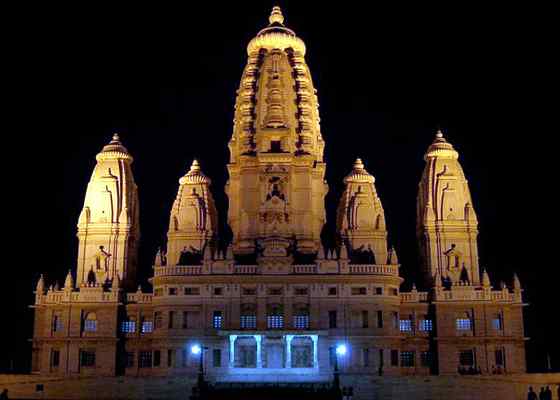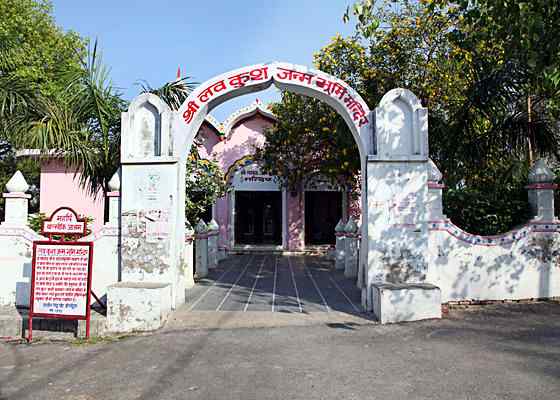How to reach Kanpur
To reach Kanpur, a city in Uttar Pradesh, India, you can use the following transportation options:By Air: The nearest airport to Kanpur is Chaudhary C...
To reach Kanpur, a city in Uttar Pradesh, India, you can use the following transportation options:
- By Air: The nearest airport to Kanpur is Chaudhary Charan Singh International Airport (LKO) in Lucknow, which is approximately 77 kilometers away. From the airport, you can take a taxi or a pre-paid cab to reach Kanpur. The journey by road usually takes around 1.5-2 hours, depending on traffic conditions.
- By Rail: Kanpur is well-connected to major cities in India through an extensive rail network. Kanpur Central Railway Station is a major junction and is served by several trains. You can check the train schedules and book tickets online through the official Indian Railways website or other popular ticketing platforms. The duration of the journey will depend on the origin of your travel.
- By Road: Kanpur is connected to various cities through a network of national highways and state highways. You can reach Kanpur by road using private vehicles, buses, or taxis. Some major highways that connect Kanpur are:
- National Highway 19 (NH-19): Connects Delhi and Kolkata, passing through Kanpur.
- The Yamuna Expressway connects Greater Noida to Agra. From Agra, the National Highway 19 (NH-19) continues and passes through cities like Firozabad, Shikohabad, and Etawah before reaching Kanpur
- National Highway 27 (NH-27): Connects Jhansi and Gorakhpur, passing through Kanpur.
- Uttar Pradesh State Highway 25 (UP SH-25): Connects Kanpur with nearby cities like Unnao, Fatehpur, and Raebareli.
How to reach Kanpur
Learn MorePlaces to see in Kanpur
Kanpur Zoological Park: This zoo is one of the largest in Asia and houses a variety of animals, including lions, tigers, elephants, and more. It also ...
- Kanpur Zoological Park: This zoo is one of the largest in Asia and houses a variety of animals, including lions, tigers, elephants, and more. It also has a natural lake and a toy train for visitors.
- Kanpur Sangrahalaya: This museum showcases the history, culture, and art of the region. It has an extensive collection of artifacts, sculptures, paintings, and archaeological items.
- J.K. Temple: The temple, one of the most prominent landmarks in the city, is renowned for its beautiful architecture, intricate carvings, and serene surroundings. It attracts a large number of devotees and tourists throughout the year. The main deity of the temple is Lord Radha Krishna, and the temple complex also houses shrines dedicated to Lord Hanuman, Lord Shiva, and several other Hindu deities.
- Bithoor: Situated on the banks of the Ganges River, Bithoor is a historic town near Kanpur. It is known for its religious significance and attractions like Brahmavart Ghat, Dhruv Teela, and Valmiki Ashram.
- Phool Bagh: Phool Bagh is a beautiful garden and a popular recreational spot in Kanpur. It features lush green lawns, fountains, a toy train, and a musical fountain show in the evenings
- Moti Jheel: It is a large artificial lake located in the heart of Kanpur. Moti Jheel offers boating facilities and is a favorite spot for locals and tourists to relax and enjoy the scenic surroundings.
- Jajmau: This historical neighborhood in Kanpur is famous for its ancient ruins and archaeological sites. It is home to several old temples, mosques, and the Jajmau Hill, which offers panoramic views of the city.
- Kanpur Memorial Church: Also known as the All Souls' Cathedral, this beautiful Anglican church is an architectural marvel and holds historical significance.
Places to see in Kanpur
Learn MoreWeather in Kanpur
Kanpur experiences a typical version of a humid subtropical climate that resembles the climate of Delhi to some degree. Kanpur lies in northern plains...
Kanpur experiences a typical version of a humid subtropical climate that resembles the climate of Delhi to some degree. Kanpur lies in northern plains of India, which witness extremes of temperature. It can drop to a minimum of 0.0 °C in the winters while it goes up to 48 °C in summers. Kanpur experiences severe fog in December and January. In summer, excessive dry heat is accompanied by dust storms. Rains appear between July and September almost at the end of regular monsoon season. Some rainfall is recorded during the harvest season of March–April. These extremes, however, give the region an advantage of having three crops of versatile range of products. Best time to visit Kanpur is either October–November or February–March.
Weather in Kanpur
Learn MoreWhat to Eat in Kanpur
The popular cuisine consists of both vegetarian and non-vegetarian dishes. As Kanpur is situated in North India, the local cuisine is heavily influenc...
The popular cuisine consists of both vegetarian and non-vegetarian dishes. As Kanpur is situated in North India, the local cuisine is heavily influenced by the flavors and dishes of the region. Kanpur has a strong connection to Awadhi cuisine, which originated in nearby Lucknow. Awadhi cuisine is known for its rich and aromatic flavors, and the use of ingredients like saffron, cardamom, and rose water. Mughlai cuisine, known for its rich and indulgent flavors, is also prevalent in Kanpur.
What to Eat in Kanpur
Learn MoreKanpur History
Kanpur, also known as Cawnpore, is a city located in the state of Uttar Pradesh in northern India. It has a rich and significant history that spans se...
Kanpur, also known as Cawnpore, is a city located in the state of Uttar Pradesh in northern India. It has a rich and significant history that spans several centuries.
Kanpur History
Learn MoreAncient and Medieval Era
The area around Kanpur has been inhabited since ancient times. It was part of the Chandela dynasty's kingdom in the 11th and 12th centuries. The regio...
The area around Kanpur has been inhabited since ancient times. It was part of the Chandela dynasty's kingdom in the 11th and 12th centuries. The region came under the control of the Delhi Sultanate in the 13th century and later the Mughal Empire in the 16th century. During this period, the city was a small village known as "Kanhpur." British
Ancient and Medieval Era
Learn MoreColonial Era
The British East India Company established a trading post in Kanpur in 1801. The city gained importance during the British colonial period as it becam...
The British East India Company established a trading post in Kanpur in 1801. The city gained importance during the British colonial period as it became a major industrial and commercial center. The construction of the Ganges Canal in the mid-19th century further facilitated the growth of the city. Kanpur played a significant role in the Indian Rebellion of 1857, which saw a major uprising against British rule. The Siege of Cawnpore (now Kanpur) during the rebellion was a tragic event where a large number of British civilians were killed.
Colonial Era
Learn MoreIndustrial Development
Kanpur emerged as a major industrial hub in the late 19th and early 20th centuries. It became renowned for its textile mills, leather industry, and th...
Kanpur emerged as a major industrial hub in the late 19th and early 20th centuries. It became renowned for its textile mills, leather industry, and the manufacturing of various goods. The city witnessed rapid industrialization and attracted many entrepreneurs and workers. The Indian Institute of Technology (IIT Kanpur) was established in 1959, further boosting the city's reputation as an educational and technological center.



